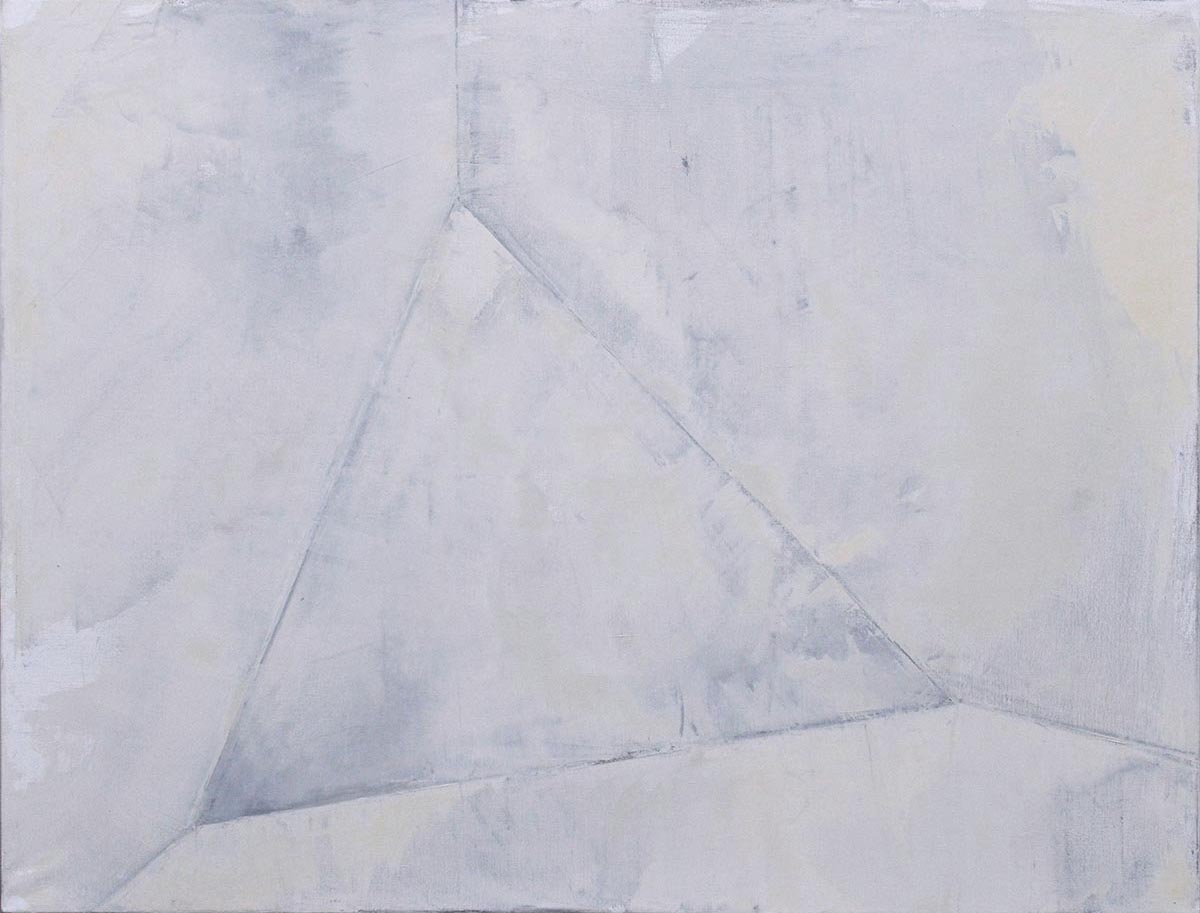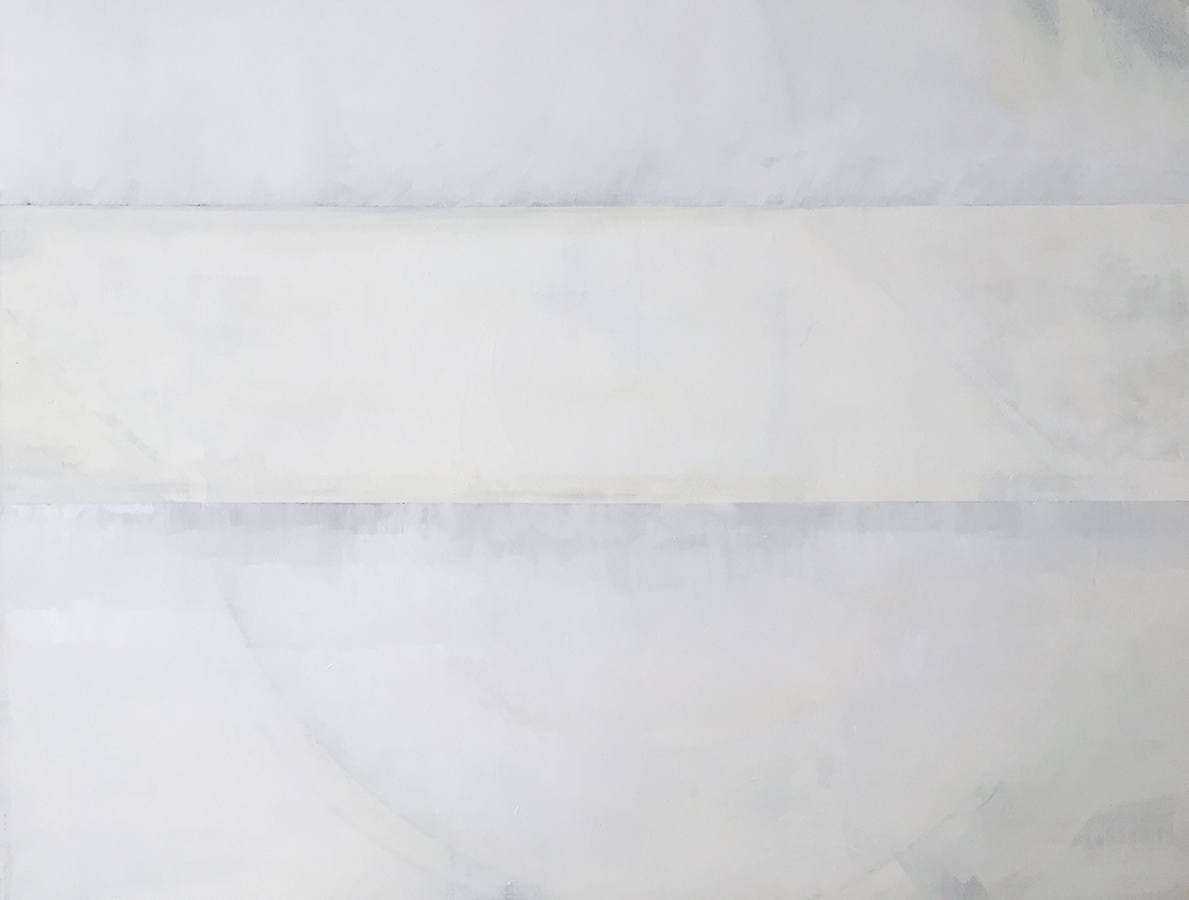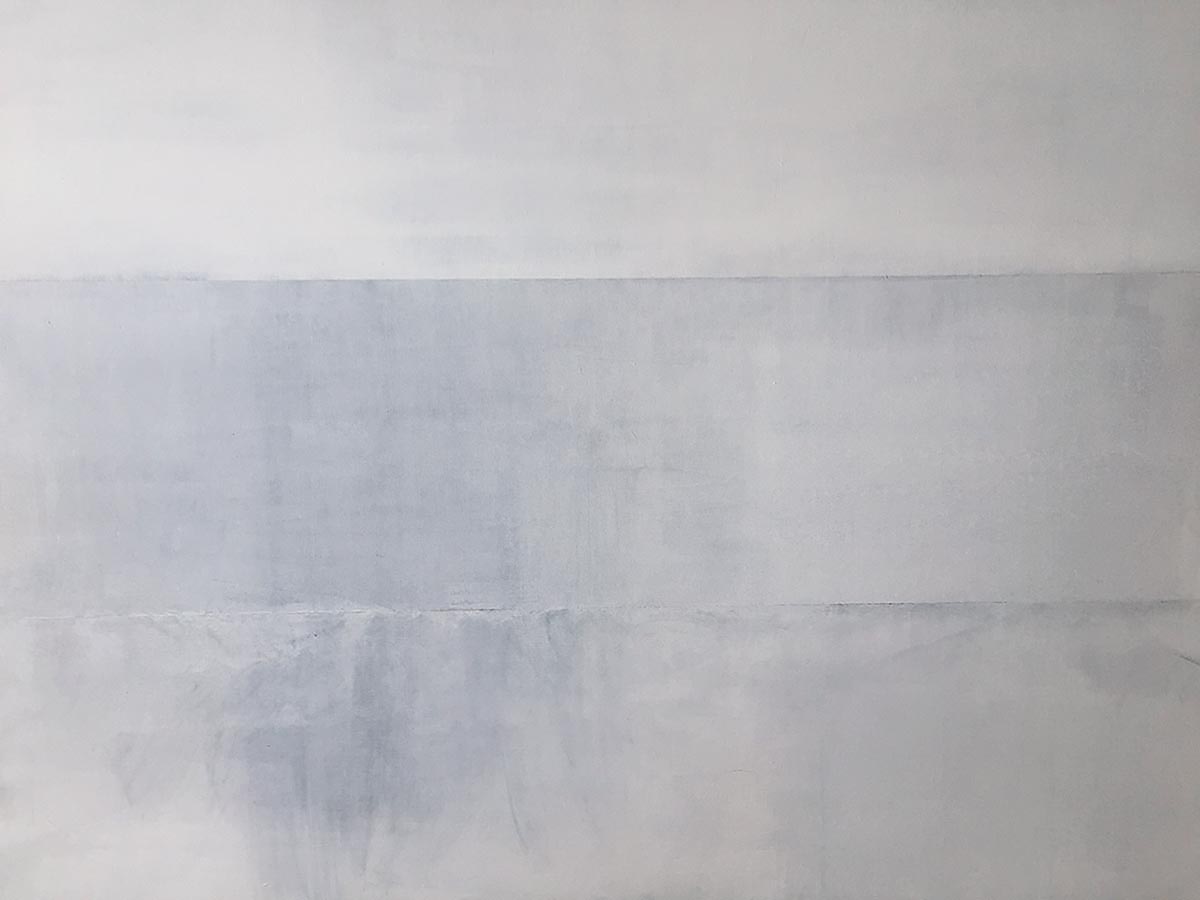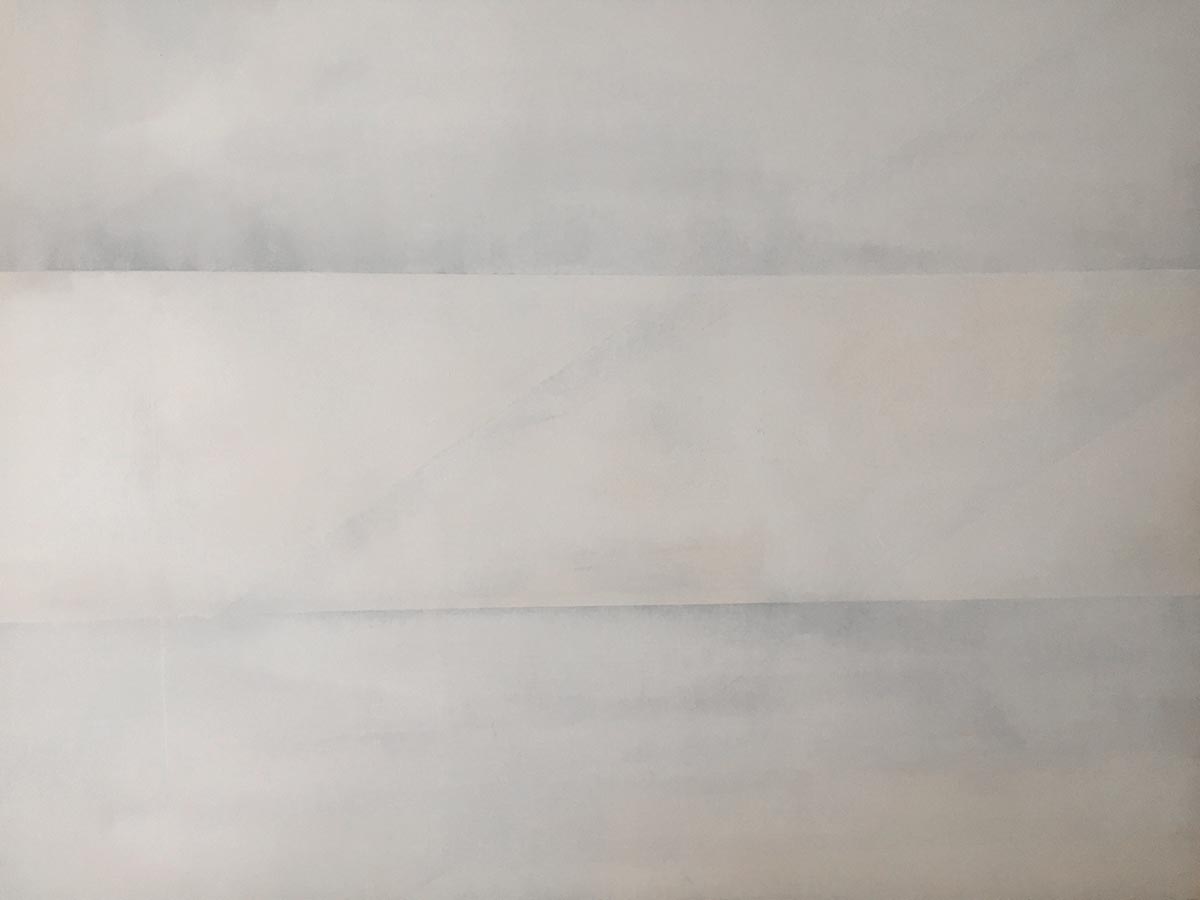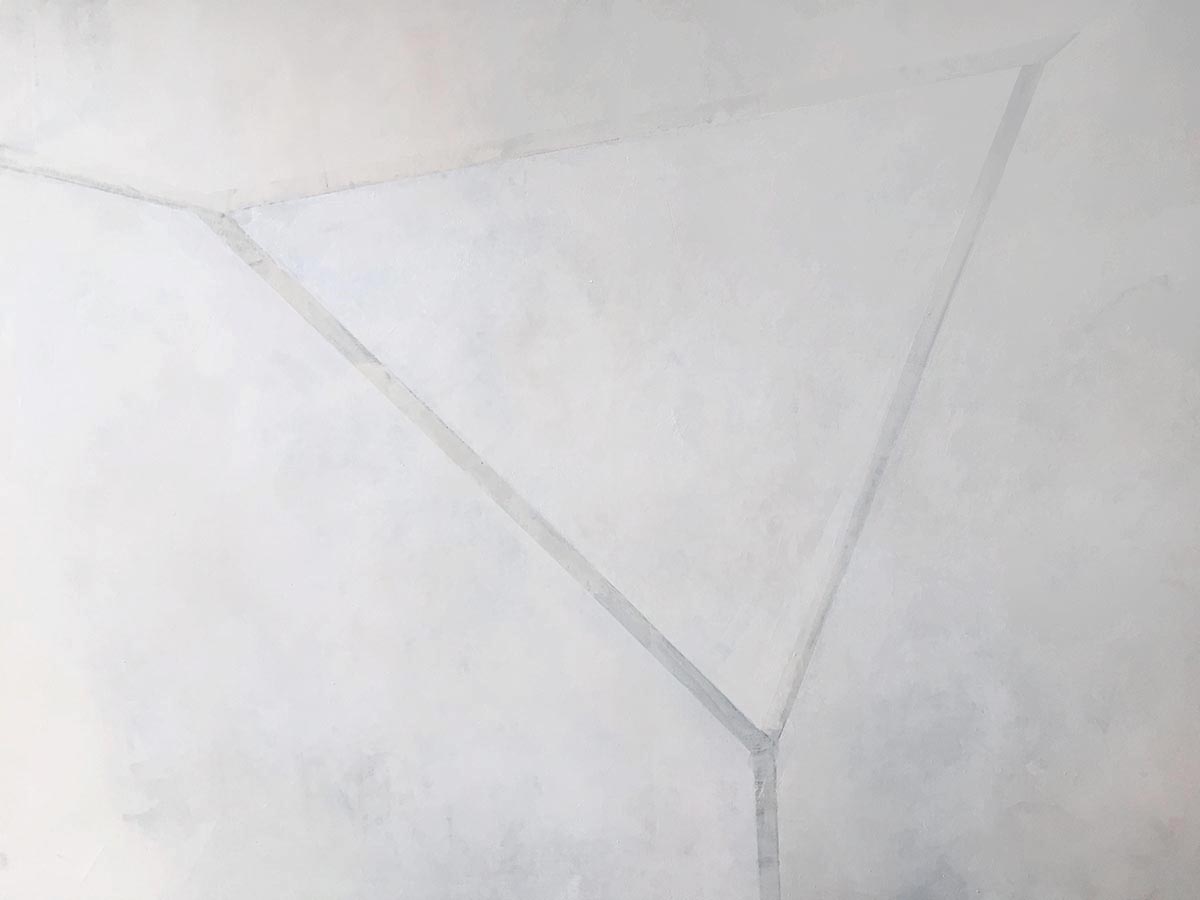Chlorotide
Et blanc ! Cela sonne comme une évidence ! À proprement parler le blanc n’est pas une couleur, il est la « somme » de toutes les couleurs. Cette série ouverte se compose pour l’instant de cinq toiles de même format (114 x 146 cm). Comme pour Robert Ryman (1930-2019), mon intention n’est pas de peindre du blanc mais de rendre visible d’autres substances de la peinture : la trace, le fond et la forme, la couleur… sa matérialité. La systématisation du format est le vocable limitatif de toute expressivité et cerne la perception de ce matériau.
La technique utilisée est mixte – huile, charbon de bois, acrylique – pour explorer, plus en-avant, la moelle de la peinture. Le therme de chlorotides désignait, notamment, les jeunes femmes phtysiques, au teint pâle. lE 1er avril 1897, l’humoriste Alphonse Allais en fait un monochrome blanc intitulé « Première communion de jeunes filles chlorotiques par un temps de neige ».
Chlorotide
So white! This is a given! Correctly speaking, white isn’t a color. It’s the sum of all the colors. At the moment, this open series comprises five canvasses of the same format (114 x 146 cm). Like Robert Ryman (1930-2019), my intention was not to paint using white, but to make other substances than the paint visible: marks, substance and shape, color – its physicality. The systematization of the format is the limiting sound of any expression and determines the perception of this material.
A mixed technique is used – oil, charcoal and acrylic – in order to explore the very core of the painting more deeply.
The term chlorotides was in particular used to identify anemic young women with pale skin. On 1 April 1897, the humorist Alphonse Allais painted a white monochrome entitled “First communion of anemic young girls in the snow”.
